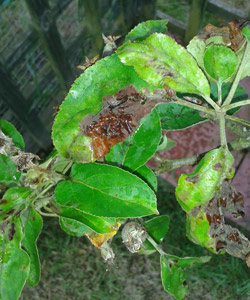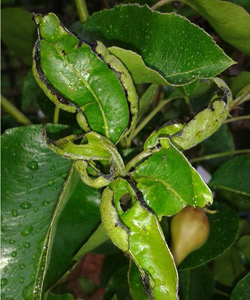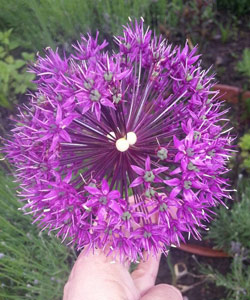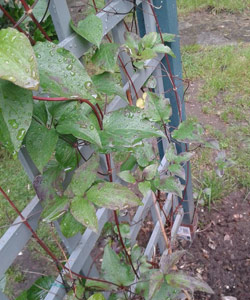- Flowers
Flower Bulbs Allium Bulbs Anemones Begonia Tubers Crocus Bulbs Daffodil Bulbs Dahlia Tubers Hyacinth Bulbs Lily Bulbs Tulip Bulbs Woodland Flower Bulbs Other Flower BulbsFlower Plants Annual Bedding Plants Children's Flower Plants Clematis Climbing Plants Cottage Garden Plants Exotic Plants Flowers For Cutting Plants Foliage Plants Greenhouse & Indoor Plants Ground Cover Plants Hanging Basket Plants Lavender PlantsHardy Geraniums Herbaceous Border Plants Heuchera Pansies and Violas Patio Plants Water Plants Window Box Plants Winter Bedding Plants Hydrangea Large impact plants Recommended By Our Experts
- Fruit & Vegetables
- Trees, Shrubs & Ornamentals
- House Plants
- Tool Shed
Garden Tools & Equipment Barrows and Trolleys Garden Solutions Harvesting Plant Supports Seed Sowing Tree Stakes Water Butts Weed Control Hand Tools Secateurs, Snips and Pruners WorkshopGarden Irrigation & Watering Irrigation Kits Water Butts Hoses & Sprays Miscellaneous Fertilisers Plant Pots Hanging Baskets Plant Protection Garden Compost All Compost
- Outdoor Living
Garden Living Barbecues & Firepits Garden Storage Solar Lights & Lighting Fixtures & Ornaments Awnings Sail Shades Garden Clocks Landscaping Lawn Edging PavingPatio Heaters Gas Patio Heaters Electric Patio Heaters Fire Pits, Chimeneas, Fire Baskets Wallmounted/Ceiling Patio Heaters Freestanding/Table Top Patio Heaters Water Features Solar Powered Water Features Mains Powered Water Features Indoor Water Features Outdoor Water FeaturesGarden Furniture Rattan Furniture Parasols Garden Benches Dining Sets Loungers Wooden Furniture Party Tents & Gazebos
- Wild Birds
- Gardening Info
- Special Offers
Join Our Gardening ClubVan Meuwen Gardening Club
Become a Member
Join our Gardening Club to unlock exciting perks and discounts!
JUST £10 for one year's membership
10% OFF EVERY order placed online £20 worth of Van Meuwen Vouchers Exclusive members only deals Join Now
Facebook Questions and Answers for the 6th June 2014

Click here to see our previous Q&A sessions.
Hello Facebook fans, thanks for your questions this week, here are Carly's replies:
Avril Ferrier
What is causing this on my apple tree? And how do I treat it?

Hi Avril, sorry to see your apple tree looking so unhappy. It's hard to diagnose exactly what the problem is without closer inspection. It could be a nutrient deficiency, too much fertiliser or one of the fungal diseases apple scab or blossom wilt/brown rot. If you haven't been feeding your tree, try applying a balanced liquid feed every few weeks throughout summer. If you've been feeding the tree regularly it may be best to hold off until its condition improves as this could cause further stress. The symptoms of apple scab are dark patches or blotches on the leaves, with the leaves often falling prematurely; cracking on young shoots, and black scabby marks on the fruit which can lead to distortion. Blossom wilt and brown rot are the same fungus, which cause the flowers and fruit to wither and die. Leaves on the fruiting spurs may also shrivel and there may be die-back of the whole flowering shoot. If the leaves and fruits get progressively worse then this could be blossom wilt. The best course of action for both scab or blossom wilt is to prune out any infected shoots, back to healthy growth and put the clippings in with normal household waste (don't compost or recycle them). Also make sure you clear away any fallen leaves or fruits from the ground as this could harbour the fungus over winter. As the flowers open next year try spraying your tree with a systemic fungicide such as Westland Plant Rescue Fungus Control (containing Difenoconazole), following the instructions on the label.
Also this on my pear tree? They are both dual trees in pots.

It looks like perhaps a slug or snail has had a nibble at the young leaves but the curling and blackened leaf edges look like scorch. This can be caused by frost, strong winds or excessively high light levels coupled with a dry atmosphere. It can also be caused by over-fertilisation, where the salts interfere with the uptake of water at the roots, causing leaf spots and damage to the leaf margins. Dryness at the roots exacerbates the problem as dehydrated leaves are more susceptible to scorching. You could try holding off on the fertiliser for a few weeks and allow any fertiliser salts to be washed away naturally with your normal watering regime. Conversely these symptoms could also be a sign of nutrient deficiency so if you haven't been feeding, start to apply a balanced liquid feed every few weeks. Make sure the soil isn't allowed to dry out, but also ensure the roots aren't sitting in wet compost either. Wet soil can cause root rot which also leads to scorching as the plants struggle to take up water. Best of luck Avril, I hope I've given you some ideas as to the cause of the problem!
Julie Goodwin
What are these strange looking things in my Allium flower? Out of around 100 blooms they are only on 1 flower. They are the texture and shape of a tiny bulb. Many thanks.

Hi Julie, these look like aerial bulbils and are, as you say, very small bulbs which can be potted up and grown on. There are some species which are well known for doing this so perhaps this particular bulb has inherited some of those genes! It could also be a random mutation as often happens in the plant world. If you were to pot them up or place them in a nursery bed I would expect them to start flowering the year after next, once they've reached a reasonable size. I hope this helps.
El Bells
If I spray Provado on my plants will it also kill bees when they take the pollen? The spray is for lily beetles and green fly.
Hi El, this could harm bees if the spray makes direct contact with them. The best advice is to spray the leaves carefully in the evening, avoiding the flowers, when bees are less active. Spray only when needed, following the instructions on the packet. There have been some arguments recently that this spray and others like it could be harmful to bee populations, but the research is still ongoing. To treat lily beetle organically, wipe off the larvae by hand from the underside of the leaves and squash any adults you see. Green fly can be treated with organic contact insecticides based on natural compounds. I hope this helps.
Kate Rose
Hi Carly. Do I need to worry about these dark blotches on my otherwise seemingly healthy clematis Nike? Also, how can I stop snails nibbling the top shoots off young clematis plants? I've got sheep pellets to stop the slugs but nothing seems to stop the pesky snails!

Hi Kate, your clematis does look very healthy so I would suspect these dark blotches are caused by environmental stress. Bronze blotches can be caused by waterlogged soil which leads to iron toxicity. The only thing that will help is to improve the soil drainage, especially if you have clay soil. A mulch of organic matter around the base of the plant each spring should help. Another possibility is a nutrient deficiency such as potassium, which can cause purple leaf tints. This is most common on light sandy soils and shouldn't be a problem on clay. Sulphate of potash would remedy this if that is the problem (only a soil test would reveal this for sure). An annual addition of organic matter will also help. If the shoots start turning black and the plant wilts, it could be the fungal infection Clematis Wilt. If your plants do start wilting, cut back all affected stems to healthy tissue (free of any black staining) and dispose of the cut material with your household waste. Even if you end up cutting large amounts of the plant away it should sprout again from the base.
How strange that the sheep pellets don't seem to work on snails - they are meant to deter both slugs and snails! The best alternative to get rid of snails is either to scatter slug pellets sparingly around the plant, or use beer traps. A simple beer trap can be made by cutting the bottom off a lemonade bottle and sinking it into the ground so the top is level with the soil surface. Then simply fill the trap with beer. Other similar traps can be made by placing empty grapefruit skins or melon skins upside down on the soil. Slugs and snails love to gorge on the sweet, aromatic flesh of fruit and the darkness and moisture suits them well. All you have to do is check the skins each morning and destroy the snails hiding in there! I hope this gives you some ideas Kate, best of luck.
Sign up to the Van Meuwen Gardener's Club for Special Offers
Delivery Information Privacy Policy Cookies Terms of Business Affiliate Programme Planting & Cultural Advice Contact Us© 2025 Van Meuwen. All rights reserved. A division of Branded Garden Products Limited.
- House Plants
